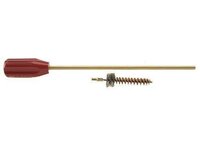Bronze Lifetime
- Messages
- 138
- Reactions
- 54
I have a problem that I can't figure out. I'm reloading .223 once fired brass, mixed head stamp. I reloaded and shot several hundred rounds with no problems (that may just be coincidence). Then I started getting cartridges that wouldn't chamber (the bolt wouldn't close) , or would chamber just barely with heavy effort, then be impossible to eject with the charging handle on my ar-15 (stuck tight). My ar is 5.56 chamber.
I have checked the chamber with 5.56 go, no go gauges and they say it's in spec (would that make a difference reloading .223?). I have tried two different full length reloading dies (Lee and Redding .223). I thought it might be case length, but have trimmed cases that still stuck. Also tried Lee factory crimp die to make sure the case mouth wasn't flared at all. Also loading to spec overall length according to Lee and Hornady manuals. Have tried resizing cases that stuck when I checked them, in case I hadn't fully closed the press the first time (using a Lee single stage press). The ones that stick don't seem to have any visible defects and a micrometer check of dimensions looks ok. The only other thing I can think of is that the rim that the ejector catches might not be perfectly flat, but I don't see any visible indication of that. About the only thing I haven't tried is checking the rounds in another rifle to see if they still jam.
I'm to the point of chambering each reload to see if it fits, then setting aside the ones that don't. There must be something that I'm missing. I would appreciate any comments or suggestions for what else to try or what else to check. I'm hoping someone else has had this problem and figured out what is causing it. Thanks in advance for any help.
I have checked the chamber with 5.56 go, no go gauges and they say it's in spec (would that make a difference reloading .223?). I have tried two different full length reloading dies (Lee and Redding .223). I thought it might be case length, but have trimmed cases that still stuck. Also tried Lee factory crimp die to make sure the case mouth wasn't flared at all. Also loading to spec overall length according to Lee and Hornady manuals. Have tried resizing cases that stuck when I checked them, in case I hadn't fully closed the press the first time (using a Lee single stage press). The ones that stick don't seem to have any visible defects and a micrometer check of dimensions looks ok. The only other thing I can think of is that the rim that the ejector catches might not be perfectly flat, but I don't see any visible indication of that. About the only thing I haven't tried is checking the rounds in another rifle to see if they still jam.
I'm to the point of chambering each reload to see if it fits, then setting aside the ones that don't. There must be something that I'm missing. I would appreciate any comments or suggestions for what else to try or what else to check. I'm hoping someone else has had this problem and figured out what is causing it. Thanks in advance for any help.












